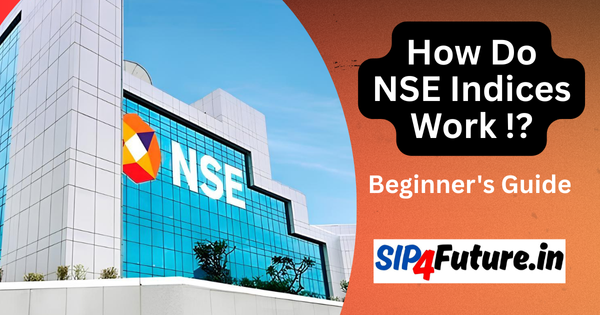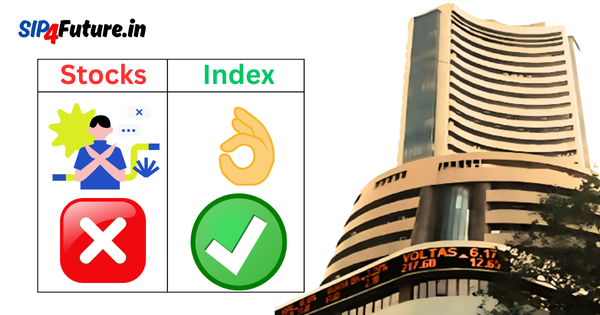The financial landscape of India’s banking sector is ever evolving, and IDFC First Bank Ltd (IDFCFIRSTB) remains a key player navigating this dynamic environment. In its Q4 FY25 results, announced on April 26, 2025, IDFC First Bank reported a mixed performance: a significant 58% year-on-year (YoY) decline in net profit to ₹304 crore, juxtaposed against a robust 25.2% YoY growth in customer deposits, reaching ₹2,42,543 crore. This article delves into the nuances of IDFC First Bank’s Q4 FY25 performance, exploring its financial metrics, strategic initiatives, and market positioning, while offering insights into what these results mean for investors and the banking industry.
What Drives IDFC First Bank’s Q4 FY25 Performance?
IDFC First Bank, formed through the 2018 merger of IDFC Bank and Capital First, has positioned itself as a customer-centric institution with a strong digital footprint. Its Q4 FY25 results reflect both challenges and strengths. The 58% YoY profit decline, from ₹724 crore in Q4 FY24 to ₹304 crore, was largely driven by elevated provisions, particularly in the microfinance portfolio, which contracted by 28.3% YoY. According to Moneycontrol, these provisions were a prudent measure to address stress in the microfinance sector, a segment facing industry-wide pressures.
Despite the profit dip, the bank’s deposit growth tells a story of resilience. Customer deposits surged to ₹2,42,543 crore, with retail deposits growing 26.4% to ₹1,91,268 crore. The Current Account Savings Account (CASA) ratio, a critical indicator of low-cost funding, remained robust at 46.9%, slightly down from 47.2% a year ago. This stability underscores IDFC First Bank’s ability to attract and retain depositors, a strategic strength highlighted by Managing Director and CEO V Vaidyanathan in the bank’s investor presentation.
| Key Financial Metrics | Q4 FY25 | Q4 FY24 | YoY Change |
|---|---|---|---|
| Net Profit (₹ crore) | 304 | 724 | -58% |
| Customer Deposits (₹ crore) | 2,42,543 | 1,93,664 | +25.2% |
| Gross Advances (₹ crore) | 2,41,926 | 2,00,843 | +20.4% |
| Net Interest Income (₹ crore) | 4,907 | 4,469 | +9.8% |
| CASA Ratio (%) | 46.9 | 47.2 | -0.3% |
| Gross NPA (%) | 1.87 | 1.94 | Improved |
How Did Provisions Impact Profitability?
The sharp decline in net profit can be traced to high provisions, totaling ₹14.5 billion in Q4 FY25, up from ₹13.3 billion in Q3 FY25, as noted in posts on X. A significant portion of these provisions—₹315 crore—was allocated to the microfinance segment, reflecting stress in this high-risk portfolio. Additionally, a ₹253 crore provision was made for a Maharashtra-based toll account, impacted by a recent toll fee waiver. Excluding these specific provisions, the bank’s adjusted credit cost for FY25 was 1.76%, improving to 1.73% in Q4, indicating underlying operational stability.
The microfinance sector has been a pain point for many Indian banks, with rising delinquencies due to economic slowdowns and borrower over-leverage. IDFC First Bank’s decision to shrink its microfinance exposure by 28.3% reflects a strategic pivot toward more stable lending segments, such as retail, rural, and MSME loans, which grew 18.6% YoY to ₹1,97,568 crore. This shift aligns with the bank’s long-term goal of reducing its credit-deposit ratio, as outlined in its Q4 FY25 business update on Samco.
What Are the Highlights of Deposit and Loan Growth?
Deposit growth remains a cornerstone of IDFC First Bank’s strategy. The 25.2% YoY increase in customer deposits to ₹2,42,543 crore was driven by a 26.4% rise in retail deposits and a 24.8% growth in CASA deposits, totaling ₹1,18,237 crore. According to the National Stock Exchange (NSE), IDFC First Bank’s focus on retail banking and digital innovation has bolstered its deposit franchise, making it a standout in a competitive market.
On the lending side, gross advances grew 20.4% YoY to ₹2,41,926 crore, with retail, rural, and MSME loans leading the charge. The bank’s legacy infrastructure loan book, a remnant of its pre-merger days, was further reduced by 21% YoY to ₹2,654 crore, now comprising just 1.2% of total funded assets. This reduction reflects IDFC First Bank’s ongoing efforts to de-risk its balance sheet, a move praised by analysts on BSE.
| Deposit and Loan Metrics | Q4 FY25 (₹ crore) | Q4 FY24 (₹ crore) | YoY Growth |
|---|---|---|---|
| Customer Deposits | 2,42,543 | 1,93,664 | 25.2% |
| Retail Deposits | 1,91,268 | 1,51,287 | 26.4% |
| CASA Deposits | 1,18,237 | 94,795 | 24.8% |
| Gross Advances | 2,41,926 | 2,00,843 | 20.4% |
| Retail, Rural, MSME Loans | 1,97,568 | 1,66,543 | 18.6% |
How Is Asset Quality Holding Up?
Asset quality is a critical measure of a bank’s health, and IDFC First Bank showed improvement in Q4 FY25. The Gross Non-Performing Assets (GNPA) ratio declined to 1.87% from 1.94% in Q3 FY25, while the Net NPA ratio slightly increased to 0.53% from 0.52%. The Provision Coverage Ratio (PCR) stood at 75.27%, up significantly from 68.18% a year ago, reflecting the bank’s conservative approach to risk management.
Gross slippages, or loans turning non-performing, were marginally lower at ₹2,175 crore in Q4 FY25 compared to ₹2,192 crore in Q3. The bank’s urban retail book maintained a strong collection efficiency of 99.5%, though the microfinance book saw a slight dip to 98.6%. These figures, reported by CNBC TV18, highlight IDFC First Bank’s ability to manage asset quality despite sector-specific challenges.
When Will Capital Raising Boost Growth?
To fuel its growth ambitions, IDFC First Bank’s board approved a ₹7,500 crore equity capital raise through the issuance of Compulsorily Convertible Preference Shares (CCPS) to affiliates of Warburg Pincus and the Abu Dhabi Investment Authority (ADIA). This move, pending shareholder and regulatory approvals, will bolster the bank’s capital adequacy ratio, which stood at 16.60% in Q2 FY25, with a Common Equity Tier-1 (CET-1) ratio of 14.08%.
The capital infusion follows a ₹3,200 crore equity raise in July 2024 and the October 2024 merger with IDFC Ltd, which added ₹618 crore to the bank’s net worth. These steps strengthen IDFC First Bank’s balance sheet, enabling it to pursue loan growth while maintaining regulatory capital buffers. As noted in the bank’s investor presentation on IDFC First Bank’s website, the capital raise aligns with its five-year guidance (FY24-FY29) targeting a 20.3% loan growth and a 24.8% deposit growth.
What Strategic Initiatives Are Shaping the Future?
IDFC First Bank’s strategic focus on retail banking, digital innovation, and customer-centric services has yielded tangible results. Its credit card business crossed 3 million cards issued in Q2 FY25, while its wealth management Assets Under Management (AUM) surpassed ₹20,000 crore. The bank remains the largest issuer of FASTags in India, with 20 million issued, reinforcing its leadership in digital payment solutions.
The bank’s digital platforms, including its mobile app, have driven customer engagement, with features like higher savings account interest rates and seamless loan disbursals. However, challenges remain, particularly in the microfinance segment, where the bank is actively reducing exposure to mitigate risks. The phase-out of milestone rewards for its Club Vistara Credit Card by March 31, 2025, as reported by LiveMint, reflects a strategic recalibration of its co-branded offerings.
How Does IDFC First Bank Compare to Peers?
In a competitive banking landscape, IDFC First Bank’s performance can be benchmarked against peers like Yes Bank and Bank of India. While IDFC First Bank’s 58% profit decline in Q4 FY25 is steeper than some competitors, its 25.2% deposit growth outpaces many, driven by a strong retail franchise. For context, Yes Bank reported a 3.53% stock price drop on April 25, 2025, while Bank of India saw a 2.70% decline, per LiveMint.
IDFC First Bank’s CASA ratio of 46.9% is among the highest in the industry, reflecting its ability to attract low-cost funds. However, its Net Interest Margin (NIM) of 6.18% in Q2 FY25, down slightly from 6.36% in 9MFY24, suggests pressure on profitability, a common challenge for banks navigating rising funding costs. The bank’s focus on reducing its legacy infrastructure book and improving asset quality positions it favorably against peers with higher NPAs.
| Peer Comparison (Q4 FY25) | IDFC First Bank | Yes Bank | Bank of India |
|---|---|---|---|
| Net Profit (₹ crore) | 304 | N/A | N/A |
| Deposit Growth (YoY) | 25.2% | N/A | N/A |
| CASA Ratio (%) | 46.9 | N/A | N/A |
| GNPA (%) | 1.87 | N/A | N/A |
| Stock Price Change (25.04.25) | -2.32% | -3.53% | -2.70% |
What Are the Market and Investor Sentiments?
On April 25, 2025, IDFC First Bank’s stock closed at ₹66.08 on the NSE, down 2.32% from the previous day, reflecting market disappointment with the profit decline. Over the past year, the stock has fallen 31%, hitting a 52-week low, as noted by INDmoney. Analyst ratings are mixed, with a “Hold” recommendation from Nuvama (target price ₹60) and an “Equal-weight” rating from Morgan Stanley (target price ₹58), per StockAnalysis.
Despite short-term volatility, the bank’s long-term prospects remain promising. Its five-year stock appreciation of 195%, as reported by Samco, underscores its growth potential. The proposed ₹0.25 per share dividend, subject to approvals, signals confidence in future cash flows, though some investors question the logic of paying dividends amid profit challenges, as discussed in posts on X.
When Will Profitability Recover?
The path to profitability hinges on IDFC First Bank’s ability to manage provisions and scale its retail banking operations. The bank’s guidance for FY24-FY29 targets a Return on Assets (ROA) of 1.9% and a Return on Equity (ROE) of 17%, ambitious goals given its current ROE of 7.88% over the past three years. Reducing microfinance exposure and leveraging the ₹7,500 crore capital raise will be critical to achieving these targets.
Analysts expect profitability to rebound as the bank stabilizes its microfinance portfolio and benefits from economies of scale in its retail and MSME lending. The merger with IDFC Ltd and ongoing digital investments are likely to enhance operational efficiency, potentially lowering the cost-to-income ratio, which improved to 99.8% for the credit card business in Q2 FY25.
What Lies Ahead for IDFC First Bank?
IDFC First Bank stands at a crossroads, balancing short-term challenges with long-term growth. The 58% profit decline in Q4 FY25 is a setback, but the bank’s 25.2% deposit growth, improved asset quality, and strategic capital raise signal resilience. Its focus on retail banking, digital innovation, and risk management positions it to capture market share in India’s burgeoning financial services sector.
Investors should weigh the bank’s strong fundamentals—high CASA ratio, robust deposit growth, and diversified loan book—against near-term profitability pressures. The capital infusion from Warburg Pincus and ADIA, combined with a customer-centric approach, bodes well for future growth. As V Vaidyanathan stated, “Our deposit franchise’s strength and CASA ratio reflect our core drivers, which remain intact.”
For those monitoring IDFC First Bank, tracking its progress in reducing microfinance exposure, scaling digital initiatives, and meeting its five-year guidance will be key. The bank’s ability to navigate economic headwinds while capitalizing on India’s growing retail banking demand will determine its trajectory in FY26 and beyond.




